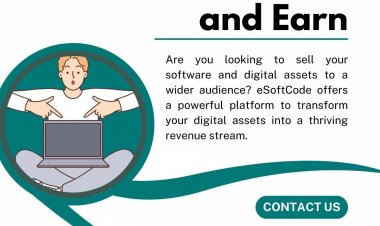Understanding Elevator Pitch Meaning: Definition and Examples
An elevator pitch is a quick speech that introduces you to the intended audience. It highlights the key points of your business, project, or idea. The main goal is to make a quick and lasting impression, initiating a conversation that can lead to further discussion. Understanding the importance of the elevator pitch meaning in business […] The post Understanding Elevator Pitch Meaning: Definition and Examples appeared first on Chegg India.

An elevator pitch is a quick speech that introduces you to the intended audience. It highlights the key points of your business, project, or idea. The main goal is to make a quick and lasting impression, initiating a conversation that can lead to further discussion.
Understanding the importance of the elevator pitch meaning in business is essential for making a strong impression at networking events or informal meetings. It prepares you to speak confidently about your business or idea at any moment. These pitches can open doors to potential investors, partners, or clients by clearly communicating with a targeted audience. These pitches force you to focus on the core aspects of your business by improving your overall messaging and marketing strategy. Now that we have learned the meaning and importance of the elevator pitch, let’s learn how to create one. Here are a few examples focusing on students, interviews, and business events. You can also refer to the tips for creating the best elevator pitch.
What is an Elevator Pitch?
Elevator pitch meaning is a short speech about yourself, your educational accomplishments, professional experience, and purpose. It is also popular as an elevator speech, elevator statement, or lift speech. Usually, the elevator pitch is about 30 seconds to 2 minutes long and provides all the necessary information about you.
The concept of the elevator pitch has a history rooted in business and entrepreneurship. The origin of the term elevator pitch is concise in various professional settings.
Here are two scenarios that brief the overview of elevator pitch history:
- Middle of 19th Century: Many buildings during 1853 were already equipped with elevators. But they were dangerous as they were free-falling to the bottom. Elisha Otis founded an automatic elevator brake system. Even though the existing elevators were not fully functional, Otis found it difficult to gain potential customers. So Otis decided to provide a live demonstration to the people. One day, Otis stood up on the elevator which is several floors above, then cut the rope of the elevator. People around him grasped, but the automatic brake system helped Otis to land safely on the ground. This way, Otis gave a presentation on Elevator pitch within 2 minutes.
- Late 20th Century: Michael Caruso was a senior editor at Vanity Fair. Caruso was continuously trying to pitch the ideas to the Editor-In-Chief. But Caruso could never do that because the Editor-In-Chief was always on the move. One day, Caruso started to join the Editor-In-Chief during short free periods to pitch the ideas.
Of all the elevator pitch meaning mentioned in history, the individuals followed certain key elements to make them effective. Here are the essential elements of an elevator pitch:
- Introduction: Introduce them to who you are. Add an opening statement to grab the attention of the audience.
- Problem: Talk about the problem that gave you an idea to find the solution. This includes the issue you address.
- Solution: Explain the solution you provide to solve the problem. Specify how your product or service solves this problem.
- Unique Selling Proposition (USP): Mention the uniqueness of your product or service. Tell the audience how your uniqueness sets you apart from your competitors.
Call to Action: Tell the audience what else you seek, a piece of advice that can help you get business or any question. This acts as a prompt for further discussion of ideas or next steps.
Examples of Elevator Pitches
Here are a few students, interviews, and business pitch examples.
1. Elevator Pitch for Students
The elevator pitch examples for students who are seeking internship opportunities or want to apply for scholarship programs are given below:
- Example pitch for a student seeking an internship:
Introduction: Hi, I am Alex Johnson, studying at XYZ University in the field of Computer Science and specialising in Artificial Intelligence (AI).
Problem: I’m passionate about software development, and I’m seeking an internship at your company to enhance my skills in this field.
Solution: I recently developed a web application that streamlines task management for small teams. I’m interested in learning more about AI and am impressed by the way it is incorporated into software development.
USP: I believe my skills and my enthusiasm for Artificial Intelligence might make me a great fit for the organisation.
Call to action: I’d love to discuss any internship opportunities you might have and how I can contribute to your projects.
- Example pitch for a student applying for a scholarship
Introduction: Hello, I’m Taylor, a student at ABC School with a strong passion for environmental science. I’ve taken advanced courses in biology, chemistry, and environmental studies.
Problem: I want to pursue a degree in Environmental Science to research sustainable solutions to combat climate change. However, financial obstacles are stopping me from taking more initiatives on environmental changes.
Solution: This scholarship would allow me to focus on my studies and extracurricular initiatives without the financial burden.
USP: I have led a successful project to reduce plastic waste in our community. The local government recognised that the plastic waste was reduced by 30%.
Call to action: I’m excited to learn more about the opportunity to contribute to the government community.
2. Elevator Speech for Interviews
People who want to attend a job interview or networking should always be prepared with good elevator speeches. Refer to these examples of elevator speech for interview:
- Example pitch for a job interview
Introduction: Hello, I’m Lee. I recently graduated from XYZ University with a degree in Marketing and a minor in Graphic Design.
Problem: I’m excited about the opportunity to join your team as a Marketing Coordinator.
Solution: I’m particularly drawn to your company because of its innovative approach to digital marketing and commitment to sustainability.
USP: I completed an internship at ABC Company, where I spearheaded a social media campaign that increased our followers by 40% and boosted engagement by 25%. In addition to my technical skills in SEO, content creation, and data analysis, one of my proudest achievements was leading a cross-functional team to launch a successful product promotion that resulted in a 15% increase in sales.
Call to action: I’m eager to contribute to your upcoming projects and help drive your marketing initiatives forward.
- Example pitch for a networking event
Introduction: Hi, my name is Alex. I’m a project manager with five years of experience in the tech industry, currently working at XYZ Corporation.
Problem: I’m in search of a company that focuses majorly on user experience regarding real-world problems.
Solution: I’m passionate about leveraging technology to solve real-world problems and always seek ways to improve efficiency and user experience. I would like to help a company that focuses on improving the user experience.
USP: I specialise in leading cross-functional teams to deliver innovative software solutions on time and within budget.
Call to action: I’ve heard great things about your work in this area and would love to hear more about your current projects and any advice you might have for someone looking to transition into AI-driven initiatives.
3. Startup and Business Pitches
In today’s fast-paced business environment, the ability to deliver a compelling elevator pitch is crucial for startups seeking funding and for innovators trying to gain support for new projects. Refer to these business and startup pitches to attract audiences:
- Example pitch for a startup idea:
Introduction: Hi, my name is Sam, and I’m the founder of GS, a startup dedicated to making urban gardening accessible and sustainable.
Problem: Our mission is to combat urban heat islands, improve air quality, and foster a sense of community through gardening.
Solution: GS is a mobile app that connects urban dwellers with local resources and a community of gardeners to transform unused spaces into vibrant and green areas.
USP: The app offers personalised gardening tips, a marketplace for eco-friendly gardening supplies, and a platform for users to share their progress and seek advice. We’ve already partnered with local nurseries and environmental organisations to provide users with quality products and expert guidance. We’ve seen a 50% increase in user engagement in our pilot city, and we’re ready to expand to new markets.
Call to action: I’m looking for investors who share our vision of a greener, healthier urban environment and can help us scale our impact.
- Example pitch for a business meeting
Introduction: Hello, everyone. My name is Chris Miller, and I’m the Sales Director at ABC Tech Solutions.
Problem: Our company specialises in providing cutting-edge software solutions that streamline operations and boost productivity for mid-sized businesses.
Solution: Today, I’d like to introduce our latest product, ABC Pro. It is a project management tool designed to integrate seamlessly with your existing systems. It offers features like real-time collaboration, advanced analytics, and customisable workflows.
USP: ABC Pro’s user-friendly interface and robust support system ensure your team can maximise its potential from day one. Our goal is to help you enhance efficiency and drive growth without the hassle of a steep learning curve.
Call to action: Thank you for your time, and I’m looking forward to exploring how we can work together to achieve your business goals.
You can refer to the structure followed in all examples provided. These pitches are below 2 minutes and serve the purpose. By using these pitches, you can easily be notable to the targeted audience.
Crafting Your Elevator Pitch
Creating an elevator pitch is quite simple. All you need to do is include the important things about yourself in aligned order. Structure the elevator pitch by including these components such as the introduction, body and conclusion. Follow these simple steps to craft your elevator pitch:
- Who are you?
Firstly, introduce yourself to the crowd. Create a list about yourself to introduce to the audience. Start by saying your name and the place.
- What do you do?
In this part, you should focus on one or two items that make an impression on the audience. Include the experiences and passion that made you get to this position. Specify your skills and passion towards the career. Among the key elements include the problem, solution and your USP.
- What do you want to ask the people?
Asking a question at the end of your pitch will let people know why you attended the conference. It is important to include a question that either shares the information or seeks advice from people. This section incorporates the Call to action key element.
Even though the structure is simple, conveying your idea in a shorter span is a tricky task. Include these 9C’s while crafting an elevator pitch:
- Concise: The elevator pitch includes a few words. Make sure to cut down the length by keeping the duration in mind. Note that every word you speak counts.
- Clear: Whatever you deliver to the audience should be clear. Every word you say should be simple yet convey your idea. Avoid complex terms in your pitch.
- Compelling: Crafting an effective elevator pitch should compel the idea behind the solution you provide. It should grab the audience’s attention and keep them engaged.
- Credible: Specify to the audience why you are qualified to provide the solution to the problem. Highlight your unique achievements and qualifications.
- Conceptual: The elevator pitch’s meaning in business will always be high, yet it delivers the concept to the audience.
- Concrete: Attach necessary examples or data to support your point. This makes your pitch more tangible.
- Customised: Be prepared to adjust your pitch based on your audience. Tailor it to address the interests and needs of the person you are speaking to.
- Consistent: Ensure that your message is consistent with your brand and other communications. This helps build trust and reinforces your overall marketing efforts.
Conversational: Make your pitch feel like a natural conversation rather than a rehearsed speech. Engage your listener, ask questions, and be responsive to their reactions.
Tips for Delivering an Effective Elevator Pitch
With the best-crafted elevator pitch, you can pitch yourself to the audience. This is possible only if you include the components properly and crisply. While delivering an elevator pitch, ensure that you don’t include unnecessary things. Refer to this checklist before you deliver an effective elevator pitch:
- Tailor your pitch to the specific audience you are addressing. Understand their needs, interests, and pain points.
- Focus on the most important points and avoid unnecessary details.
- Begin with a compelling statement or question to grab attention immediately.
- Clearly state what sets you or your product apart from the competition.
- End with a prompt for further engagement, whether it’s setting up a meeting, exchanging contact information, or asking a question.
Summarise The Concept of an Elevator Pitch
An effective elevator pitch is crucial for communicating the essence of your idea or business. The idea should be conveyed quickly and persuasively, leading to potential and valuable opportunities. By incorporating the 9 Cs, you can craft an elevator pitch that is effective, engaging, and likely to leave a positive impression on your audience.
The elevator pitch has evolved from a simple concept based on elevator rides to a critical communication tool in various professional domains. It emphasises the importance of clarity, brevity, and persuasion in making a memorable impression.
Start creating as many pitches as possible until you figure out the one suitable for the event. Practise enough to deliver the best pitch to your audience. In this blog, we have learned the meaning of the elevator pitch, its steps, and simple tips for pitching yourself.
What is the meaning of an elevator pitch?
An elevator pitch is a brief, persuasive speech that succinctly outlines an idea, product, service, or oneself. It aims to grab the listener’s attention and generate interest quickly. Typically delivered in the time span of an elevator ride, it highlights key points and value propositions to engage the audience and spark further conversation.
How long should an elevator pitch be?
An elevator pitch should be concise, ideally lasting between 30 seconds to 2 minutes. This duration ensures that the message is clear and impactful, fitting within the brief timeframe of an elevator ride. Keeping it short and focused helps maintain the listener’s attention and effectively convey the key points.
Can you provide an example of an elevator pitch for an interview?
Refer to this elevator pitch about yourself examples while attending an interview. I’m Kenny, a specialist at Apollo Enterprises. I chose a career in project management because I had a passion for it, and now I can proudly say that I’ve been able to make a real difference in people’s lives. That’s why I’m looking to continue my career with an employer who shares those same values. I know my unique skills can make a big impact at your company because I’ve proven my results with a few key projects.
What are the key elements of a successful elevator pitch?
A successful elevator pitch includes:
Introduction: Briefly introduce yourself or your idea.
Value Proposition: Highlight the unique benefits and what sets you apart.
Key Achievements: Mention relevant accomplishments or experience.
Call to Action: Suggest the next step or express your interest in further discussion.
Conciseness: Keep it brief and to the point.
How can I improve my elevator pitch delivery?
To improve your elevator pitch delivery, practice regularly to ensure smooth and confident delivery. Get feedback from others for constructive criticism. Continuously refine and update your pitch for clarity and impact. Use positive body language and, maintain eye contact, and stay calm by taking a deep breath and delivering your pitch naturally.
Also Read:
How to introduce yourself in an interview – Beginner’s Guide
10 Amazing Tips to Introduce Yourself Professionally
The post Understanding Elevator Pitch Meaning: Definition and Examples appeared first on Chegg India.



























